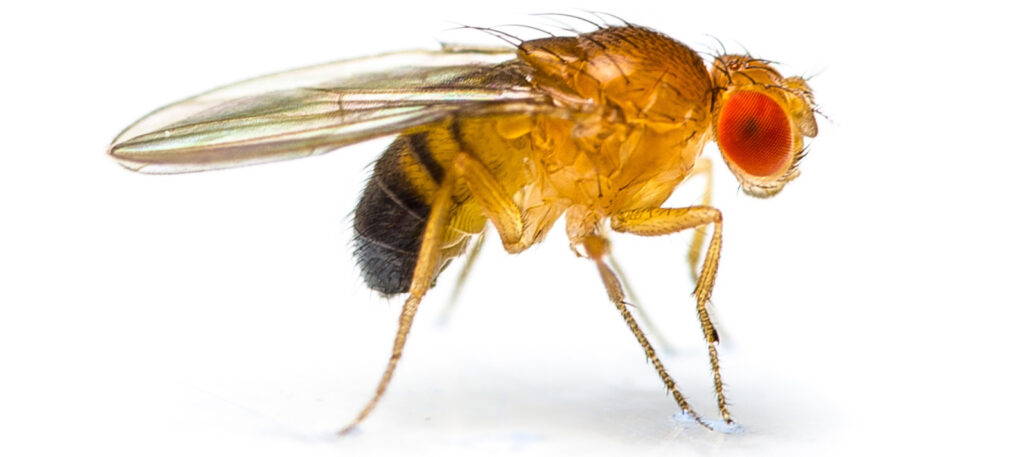Fruit Flies

Origins and distribution
Found worldwide and throughout the UK.
Characteristics
Adults are about 2 mm in length with a wingspan of 3 – 4 mm. They are small but have a fat bulbous body yellowish/brown in colour with a darkly striped abdomen. They have prominent red or orange compound eyes, but can be darker in colour and have feathery antennae.
Breeding
Female fruit flies are able to lay up to 800 eggs, approximately 20 – 25 per day on a suitable food material specific to the species. The larvae (maggots) develop in a few days and migrate to a drier area when fully developed ready to pupate. Pupae are brownish in colour and take a few days to hatch when the adults fully emerge.
Habits
Outbreaks of infestation are indicative of poor or inadequate hygiene or drainage problems and are associated with food preparation and storage areas. They usually are attracted to and breed on rotting vegetable matter, fruit, sour milk, alcohol and vinegar. Breeding very rapidly one generation is able to be produced in 7 – 8 days.
Importance
They are very rapid breeders and can quickly become a nuisance in many kitchens and restaurants, and have the potential to cause disease transmission.
How we control Fruit Flies
The most efficient method of control is prevention and involves better housekeeping practices, fruit fly activity is usually indicative of poor hygiene or housekeeping. Simple procedures of ensuring that rubbish is emptied from the area daily, sinks are kept dry overnight (if necessary covering over with cling film), and ensuring that food (particularly fruit or vegetables) is not left out along with good hygiene is usually adequate.
However, fly screens fitted to windows along with ‘glue board’ type fly machines fitted with green light tubes can supplement control measures. These type of fly machines attract the insects in and are caught on the board rather than being electrocuted by the conventional type of machine with an electric killing grid. They are too small to be electrocuted on these machines, which are not effective in controlling them. The application of insecticide usually only provides temporary relief.


















